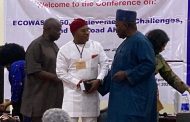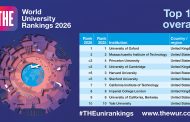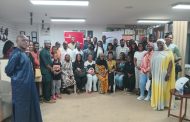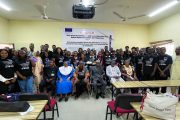The visibility, the institutional and political location of each of the three voices in the latest onslaught on rottenness in the Nigerian educational system makes it unique. First to come to the arena was Brigadier-General Shuaibu Ibrahim, the Director-General of the National Youth Service Corps Scheme. He said not quite a month ago that there are many participants in the scheme who cannot write their names. On October 14th, 2019, the media reported Nobel Laureate Wole Soyinka as saying that Nigerian education is horrifying and the country is in trouble. Four days later, Education Minister, Mallam Adamu Adamu agreed with that, saying that pupils in schools are not learning anything because of poor teachers’ quality.

DG, NYSC, Brig-Gen Shuaibu Ibrahim
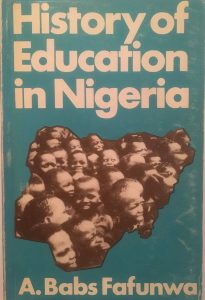
The imperative of beginning from the beginning
No one has challenged their narratives on the substantive issue of a crisis of quality. It is likely to be so because none of them is an outsider of the system. Who can challenge the DG of NYSC who interacts with the participants in the scheme directly? Same holds for Soyinka and the minister although it can be heard being said that each of them should have added in all cases that the entire society is also in turmoil at a time in which both the government of the day and the Nigerian State are completely overwhelmed. The anarchy on our roads, especially in Abuja; the lethargic nature of governance; the anarchy in politics; the violence that characterise inter-personal and inter-group relations now all point to a society in turmoil, pregnant with change.
Be that as it may, it would seem that what they are all saying is beyond debate and that Soyinka, the wordsmith among them, for example, chose his language in a manner that no one can contest it. For anyone who has encountered the system even remotely, horrifying is the word. Adamu Adamu is also conceded what he said except attributing the rottenness to the teachers being political appointees, however the phrase is understood. All three can be reduced to speaking to aggravated decay in the university system since the universities produce the graduates and bulk of the teachers for the lower system.
But, granting that these gentlemen are right does not immunize their claims from the charge of homogenizing the studentry. For, the counter-narrative is that there are students or products of the system who are simply very brilliant and can fit very well into the standards elsewhere. It is particularly contended that there are students even within this totally hopeless system whose brilliance, demonstrated in essays written under some of the most strict examination conditions, will shock these critics of the system. And they are many just as it is true that there are also many also within the same system who cannot spell their names. So, as sharp and to the point as their alerts are, the alternative argument is that it does not capture the entire story. However, saying so does not contest the consensus between the trio and, therefore, the urgency of the question of what is to be done.

Education Minister, Mallam Adamu Adamu
That throws the buck back at people like the DG, Soyinka and Adamu Adamu, especially Adamu Adamu because he is the one currently most politically located of the three newest critics in terms of setting in motion the process of undoing the ugly situation. There is doubt that Soyinka’s strategy of producing a model as an attack on the rottenness will work because of the hybridity at work today. What has been argued to be a workable, short term approach is this.
An original Buhari Boy who happens to be the Minister for Education can approach the president and formally confirm to him that the educational system is both a threat and a risk to the Nigerian State and then go on to suggest that the president personally invites ALL the leading names in academia/research to a meeting. The purpose of the meeting would be to declare this emergency to this select group defined by their being the beneficiaries of this collapsing system at a time when the universities were universities. That is to suggest that a layer exists within the system that can be constituted into a rescue team. It is probably not necessary to demonstrate the existence of that layer here, believing that should it become necessary, they are identifiable by the most important criterion in academia in that regard. The unifying point about them is that they know what made the system work years back and how it can work again.
Protagonists of this imagine the multiplicity of propositions that these eggheads will throw at the president in terms of what is to be done. However, the president should have no problem in coming up with his own suggestion when the meeting re-opens on the second day. And that is to, while acknowledging all previous suggestions, go ahead to argue that, whatever conception of Order of Battle there might be, the rescue operation cannot but start with the re-deployment back to the universities of members of this layer of resource persons and with immediate effect.
It is generally acknowledged to be true that quite a number of the members of this layer got out of the university system in circumstances that will disincline them to having anything to do with that system again. Others are so alarmed by the snippets of what is going on in the system and which they get to hear. How the president pacifies them is his own challenge to sort out. Certainly, a president has many ways of going about healing injured minds.
When they get to the university to which they are deployed, they would be (1) teaching nothing else but just the methodology course(s) save in exceptional situations and (2) keeping an eye on how a department/faculty is run in a university. The argument here is that the system will be revived within one year if this could be done. That is, revived in terms of products who can spell not only their names but develop the capacity for contextual analysis or ‘scientific’ meaning making. It is the lack of this skill in terms of problematising and situating issues and events in the social world that is at issue in all the criticisms. And that makes the universities the dangerous threat and risk to society because, without grounding in methodology, university products are, individually and collectively, challenged in terms of the carrying capacity for national well being. This is what transforms the universities into a social threat since they produce the young men and women who run the society –from journalism to medical practice to the military and whatever else.
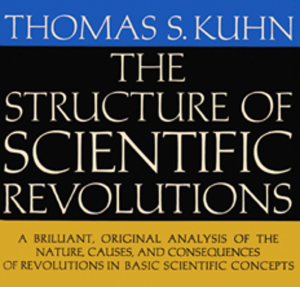
How many Nigerian undergraduates have read this book, for instance?
It is no use saying the universities are down without pinpointing the gravest spot that accounts for the collapse. There is considerable consensus that the spot is the Philosophy of Science-methodology continuum crisis across Nigerian universities. Much of what goes on in that domain is no more than regurgitation of antiquated and unquestioned wisdom. With few exceptions, methodology is a dead animal across the universities. Nigerian universities are not paying the kind of attention they should pay to what is going on in the rest of the world over methodology.
Methodology is a battleground in Europe, North America and East Asia in terms of resistance prompted by privileges that beneficiaries of existing cum dominant paradigms enjoy and wishes to protect. This contrasts sharply with Nigeria where it is willful ignorance and fear of what many academics are not aware of. It is true that some departments and, perhaps, some universities are not challenged at all or not as methodologically challenged as some others but even then, how many are they as to contest this assumption. So, at the university level, this is what can be called the core of the problem. Reinserting methodology will not solve all the problems but it will solve the ‘core’ one.
Ordinarily, this is what the National Universities Commission, NUC ought to be able to handle very easily as the regulator. No one disagrees that when Prof Rasheed Abubakar, the Executive Secretary of NUC speaks, he manifests a clear grasp of what is playing out in the universities, including where the worst cases are manifesting. But, the techniques the NUC uses are, in most cases, the techniques that reinforce the mess, from traumatizing credit load structure that leaves an average first year student, for instance, with as much as 12 course units in a semester to badly drafted benchmark course units to an accreditation system that is just not it on too many grounds. All these have warranted calls for a presidential intervention because the risks embodied in what goes on now in the name of education in Nigeria today are simply too frightening to ponder over.
From this context comes the belief that nothing less than a presidential rescue mission made up of tested old warhorses in and outside the universities will do because the assumption that the institutional uniqueness of the university will shield the university system from the anomie in the larger society has been disproved by the situation on the ground. So much so that only people like Soyinka who are immunized by global stature and age against reprisals are safe from the tactics of the vested interests involved. Even the minister and the DG cannot take the entrenched interests head-on. It is not surprising that the minister is trembling before his own powers, still acting as a critic even when he is the minister and a minister with advantage of access to the president.
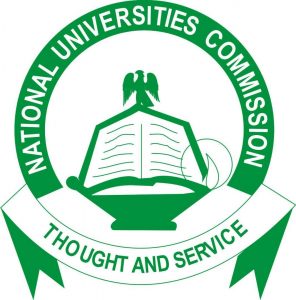

One of the contending claims around but is it a population or a national priority problem?
For some people though, Adamu Adamu’s alert is not totally wasted. For them, it draws attention to a very interesting paradox. As new students pour into the campuses this October, one observable feature about them is the excitement and happiness with that. You cannot miss it. A minor feature is the sympathy inviting look of some of them in that they are so young that sometimes, one is forced to ask if they are sure they can stay without their mothers. They are sure they can. They tell you what courses they have been admitted to read and they are just happy, totally unaware of the possibility of their first ever undergraduate lecture being by a totally unschooled academic. To imagine such totally vulnerable souls could fall victim of such in his or her first lecture is the soul destroying reality the minister is speaking to. Some universities try to avert that by insisting on only experienced hands handle first year classes. But, how many experienced hands are available everywhere? The correct guarantee should be that every academic is basically equipped to teach any undergraduate course. The fact that it is not so is the problem to be tackled.
Is it really so bad as the minister paints it, asks some interested observers. Well, there is an example on the ground. In the eighties, Gloria Emeagwali was assigned to teach History of Industrialisation in the Department of History at the Ahmadu Bello University, Zaria. She issued a course outline but which promptly became the subject of a critical review essay by the late Mahmud Tukur, former ASUU president. What is said now is that anyone who tries that on most campuses will most likely pay for it, one way or the other. Certainly, the academic culture in that will never be mentioned. What will be circulated would be why Y hates X so much as to write such a review. And if the reviewer happens to be a younger academic, then the story will be about how strong headed and disrespectful to elders s/he is. Those who tell this story say this is an elevated example and that worse things are happening, including unprincipled relations with students, (strategic gift of shirts, shoes, wrist watches, perfume and/or sex-for-marks).
The seers are saying the situation in the universities will get even worse as soon as the symbolic force of ASUU is diluted by a myopic strategy of decentering ‘dissidence’ by encouraging a split within it. Perhaps, it is only then the nation will wake up to the essence that ASUU has served even as lousy as ASUU in matters of fighting shallow and corrupt academics. What a nation!




